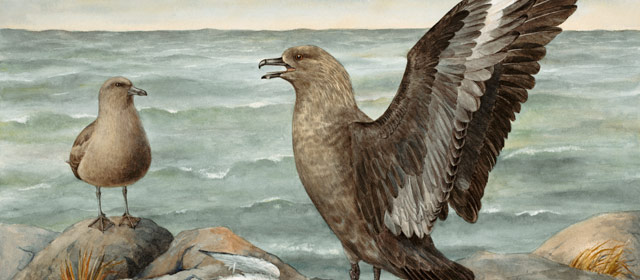Story summary
Gulls
New Zealand has three resident species of gulls. More than two million black-backed gulls live around New Zealand’s coasts, rivers and near-shore islands. At 60 centimetres long, they are the largest of the gulls living in the country. Adults have white bodies, black wings, and a yellow bill and legs. Immature birds are the same size but brown all over. They feed around coasts and scavenge food inland.
Red-billed gulls have white and grey bodies. When they are adult, their bills and legs are red. They scavenge for food around city parks and rubbish tips as well as feeding at sea and along the shore.
Black-billed gulls are found only in New Zealand. Adults are white and grey with a black bill.
Terns
Terns look similar to gulls, except that they are more lightly built, and most have forked tails. Six species of true terns breed in New Zealand, and several others are visitors. Four additional New Zealand members of the tern family are known as noddies, and they breed on the Kermadec Islands.
Black-fronted terns live only in New Zealand. They feed on insects, lizards and small fish. Because the birds eat worms from freshly ploughed fields, farmers call them ploughboys.
Caspian terns are the largest of the terns, while fairy terns are the smallest. Fairy terns are endangered – in 2024 there were only eight to 10 breeding pairs left in New Zealand. The Department of Conservation works to protect them from predators such as stoats and rats, and from motor vehicles.
White-fronted, sooty and Antarctic terns live and breed on the New Zealand coast or offshore islands. Arctic terns sometimes visit the country on their long migration from the Arctic to Antarctica.
Skuas
Skuas are aggressive seabirds that steal food from other birds, prey on eggs and chicks, and eat dead seals, sheep and cattle. Large subantarctic skuas breed on the islands off mainland New Zealand.
South Polar skuas can be found at the Ross Dependency, in Antarctica, and some pass through New Zealand waters on migration. Arctic skuas visit New Zealand during the northern hemisphere winter.





